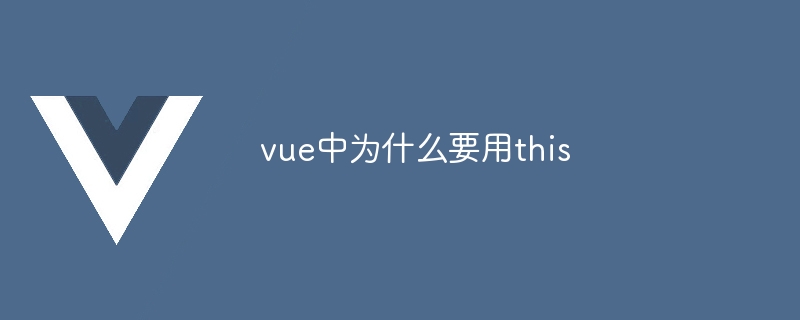Home >Web Front-end >Vue.js >Why use this in vue
Why use this in vue
- 下次还敢Original
- 2024-05-07 10:03:18662browse
Using this in Vue is crucial because it allows: Access to instance data and methods Access to the root Vue instance Binding context in event handlers Access to the contents of the slot

The necessity of using this in Vue
Using this in Vue is crucial for the following aspects:
1. Access instance data and methods
#this Allows you to access the data and methods of the current Vue instance. For example:
<code class="javascript">export default {
data() {
return {
name: 'John'
}
},
methods: {
sayHello() {
console.log(`Hello, ${this.name}!`);
}
}
}</code>
2. Access the root Vue instance
In nested components, this can also access the root Vue instance. This allows you to access the data and methods of the root instance in child components.
<code class="javascript">// 根组件
export default {
data() {
return {
message: 'Hello, world!'
}
}
}
// 子组件
export default {
mounted() {
console.log(this.$root.message); // 输出 "Hello, world!"
}
}</code>
3. Context binding in the event handler
In the event handler, by default, this is bound to the The target element of the event. However, if you use arrow functions or the bind() method to bind events, you need to explicitly bind the context using this.
<code class="javascript"><button @click="this.handleClick">Click Me</button>
export default {
methods: {
handleClick() {
console.log(this); // 输出当前 Vue 实例
}
}
}</code>
4. Access the contents of the slot
In the parent component, this can be used to access the contents of the slot of the child component. This allows you to dynamically render slot content in the parent component.
<code class="javascript">// 父组件
export default {
components: {
Child
}
}
// 子组件
export default {
render() {
return this.$slots.default;
}
}</code>The above is the detailed content of Why use this in vue. For more information, please follow other related articles on the PHP Chinese website!

